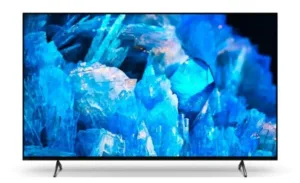Readers of Display Daily — and even many unfortunates who do not read Display Daily — know that at CES 2022 Samsung Display Company (SDC) introduced its QD-OLED display panel, and that in side-by-side demonstrations the QD-OLED panel was clearly superior in several ways to LG Display’s (LGD’s) popular WOLED panel. (For details please search the DD archives)

(or check this page for all of our tagged items – editor – all our DD articles are tagged according the topic. Click on the tags at the end to see them all.)
But there’s another story here, and let me clear about it. This story is based partly on fact, partly on rumor, and partly on informed speculation. It’s a story, but I believe it’s true — mostly.
A couple of years ago, SDC started investing billions of dollars in the development and manufacturing of QD-OLED panels. Motivation? In large part because LCD panel manufacturing had become a low-margin exercise at best, and Korean manufacturers were selling or transferring the remainder of their LCD business to mainland Chinese companies. (This trend eased during the Covid consumer electronics surge, but it’s back now.)
What would replace the manufacturing of LCD panels for television? LGD had been developing its answer for years, the color-by-white OLED (WOLED) display panel. WOLED TV sets have earned the reputation of providing the best video quality available and have been priced accordingly. But manufacturing yield and volume are up, costs are down, and these, combined with the availability of smaller panel sizes, are making WOLED sets increasingly affordable.
SDC Has to Catch Up
SDC had to play catch-up. The company’s RGB OLED displays dominated the market in premium cell phones, but did not economically scale up to TV sizes. And the WOLED approach was blocked by the Kodak patents that had been licensed to LG. SDC leveraged its relationship with quantum-dot maker Nanosys and its experience using quantum dots in its QLED premium LCD TVs.
SDC developed its QD-OLED technology which uses only blue OLEDs as the light source and makes RGB pixels by converting the blue light to red and green using quantum-dot color conversion. A key advantage of this approach is that quantum dots deliver a sharper emission spectrum than does the color-filter light from “white” OLEDs. This produces greater color saturation, brightness, and color gamut. (Is there a potential downside? Yes, but we’ll save that for another time.)
Consumers have barely had the opportunity to see QD-OLED yet. The first set to reach the market was announced at CES; the Sony Master Series XR A95K, available in 55 and 65 inches. When they do, they are likely to agree there is a new king of the OLED-TV mountain. But that is not the end of the story.
Sony’s XR-A95K will be the world’s first commerically available QD-OLED TV set. (Photo: Sony)
While QD-OLED was still in development, SDC and Samsung Visual (the TV-making part of Samsung) realized after considerable back and forth that SDC would not be able to make enough panels in 2022 to cover Samsung Visual’s anticipated demand for OLED TVs. So Samsung Visual started negotiating with LGD to purchase WOLED panels. This is a bit like Ukraine buying natural gas from Russia, but commerce makes strange bedfellows.
Then word leaked out that Samsung Visual was pressing LGD to sell them panels at a lower price than LG Electronics paid because Samsung wanted to position its WOLED sets as being less than the company’s premium technology. Before it became clear how very good QD-OLED is, some of my colleagues scratched their heads. Was Samsung going to position WOLED beneath QLED? That would be nuts, but Samsung has made some nutty product positioning decisions in the past. I still wouldn’t bet my house that Samsung won’t do this, but a sensible approach would be for Samsung to position WOLED below QD-OLED and above QLED. (also see QD-OLED vs miniLED – The Challenge of Positioning – Editor)
Reports Suggest…
Reports are that Samsung has now agreed to buy WOLED panels from LGD at the same price LG Electronics pays. That strongly suggests Samsung will price its QD-OLED sets significantly higher than its WOLED sets. An early indication will be Sony’s pricing on its QD-OLED sets, but prices have not been announced yet. Please note that Sony’s WOLED sets are significantly more expensive than LG’s.
Breaking news: Bob Raikes tells me the Korean technical news outlet The Elec is reporting that Samsung Electronics and Samsung Display are having their own Ukraine-Russia confrontation, with the TV business demanding that SDC charge the same amount for a QD-OLED panel as LGD charges for a WOLED panel. SDC want $100 more, says The Elec.
Does that mean that Samsung Visual wants to pretend that QD-OLED and WOLED TVs are the same? Or do they just want to make even more margin on their QD-OLED sets?
This story never ends. I can’t wait to write the next chapter. (KW)
Ken Werner is Principal of Nutmeg Consultants. He consults on display issues for attorneys, investment analysts, and companies using displays in their products. He is the 2017 recipient of the Society for Information Display’s Lewis and Beatrice Winner Award. You can reach him at [email protected].

